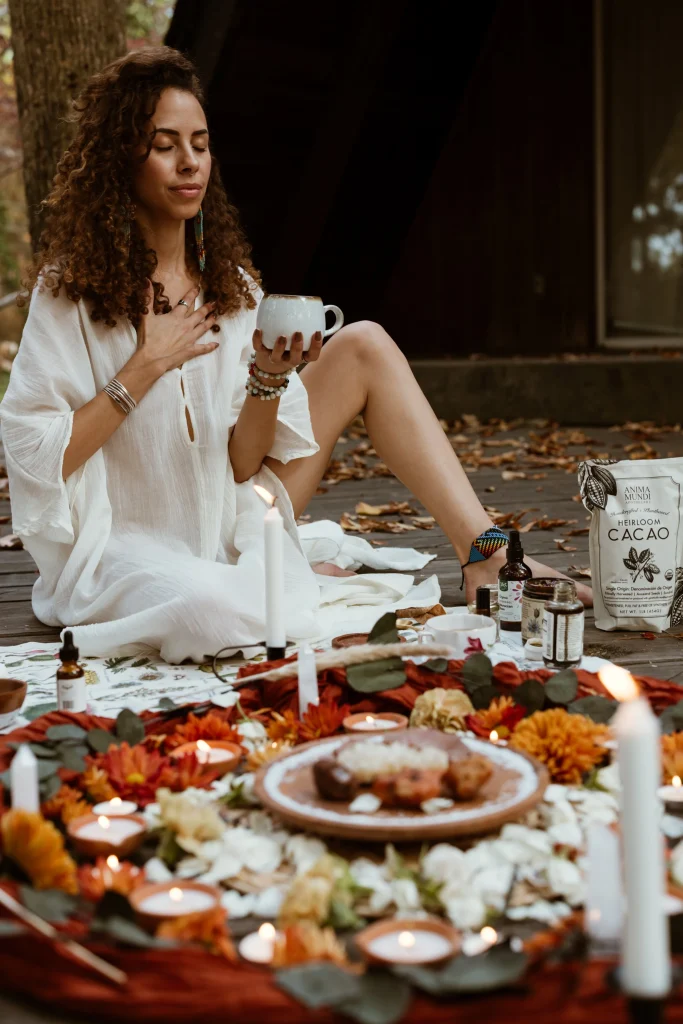Ritual of Renewal: Integrating Breathing Practices and Mindfulness in Bath Meditation

Embracing Calm in Water’s Embrace
Imagine stepping into a tranquil bathroom, where the ambiance is carefully curated to encourage relaxation. Soft lighting, perhaps a scented candle flickering in the corner, and gentle music playing in the background create an inviting atmosphere. In this haven, the ritual of renewal through bath meditation unfolds, seamlessly merging the calming properties of water with the mindful technique of controlled breathing. This results in a comprehensive experience that nurtures both the body and the mind.
The impact of engaging in bath meditation is profound, providing numerous benefits. Chief among these is stress relief. As you immerse yourself in warm water, your muscles begin to loosen, and if you practice mindfulness along with it, you can effectively alleviate tension built up throughout your day. Studies have shown that participating in mindfulness practices can lower cortisol levels, which is often referred to as the stress hormone, leading to a more peaceful mindset.
Another significant advantage is enhanced focus. Incorporating simple breathing exercises while bathing not only encourages deeper relaxation but also sharpens your attention span. For example, by concentrating on breathing in deeply through the nose and exhaling slowly through the mouth, you can elevate your meditative state, helping to clear away mental clutter. This clarity can improve your performance in everyday tasks, allowing you to approach challenges with renewed energy.
Moreover, this ritual fosters emotional balance. As you become more attuned to your breath, you gain insights into your feelings, which can lead to better emotional regulation. This is particularly helpful in a world that often prioritizes productivity over well-being. The warm water envelops you like a comforting embrace, providing a safe space to acknowledge your emotions without judgment.
The importance of incorporating breathing practices into your bath routine cannot be overstated, especially in our fast-paced society. This intentional time spent in a soothing environment is a necessary escape from the distractions of daily life. As the tepid water surrounds you, let your breath guide you, leading you to a place of tranquility.

Throughout this article, we will delve deeper into:
- Simple breathing techniques that can be easily integrated into your bathing ritual.
- The crucial role of mindfulness in enriching your meditation experience.
- The steps to creating an ideal bath environment that supports relaxation and meditation.
Join us on this enlightening journey as we uncover the transformative power of water and breath, and how together, they cultivate a personal ritual of renewal that revitalizes both your spirit and mind.
DISCOVER MORE: Click here to learn about the calming effects of meditation in the bath</a
Breathing Techniques for Deep Relaxation
At the heart of the ritual of renewal lies the act of breathing—an immensely powerful tool that can transform your bath meditation experience. Integrating breathing practices while soaking in warm water not only enhances relaxation but also promotes an intentional focus that is vital for achieving mindfulness. By becoming aware of your breath, you initiate a dialogue between your mind and body, allowing for a deeper state of tranquility.
One of the simplest yet most effective techniques is the 4-7-8 breathing method. This technique involves inhaling through the nose for a count of four, holding your breath for seven, and then exhaling slowly through the mouth for a count of eight. This rhythmic pattern not only calms the nervous system but also allows your body to release accumulated tension. In a study conducted by the American Institute of Stress, it was found that regular practice of controlled breathing can significantly reduce anxiety levels, further underscoring its importance in your bath meditation.
Another useful technique to incorporate is diaphragmatic breathing. As you lie back in the water, place one hand on your chest and the other on your belly. Inhale deeply, ensuring your belly rises while your chest remains relatively still. This evokes a more profound relaxation response, as diaphragmatic breathing engages the body’s parasympathetic nervous system, which promotes a state of calm. Evidence from the Cleveland Clinic suggests that diaphragmatic breathing can enhance your ability to manage stress and anxiety, making it an ideal practice for bath meditation.
As you explore these breathing techniques, consider using visualization to amplify the effects. Picture the warm water enveloping you, cradling your body and mind, while you count your breaths or imagine a calming scene—perhaps a serene beach or a quiet forest. This conscious effort to visualize enhances engagement during your ritual, creating a multi-dimensional experience that nurtures both body and soul.
While practicing your breathing techniques, it’s important to remain aware of your body’s reaction to the warm water and your breath. Pay attention to the sensations that arise—the swirl of heat enveloping your limbs, the ripples in the water, and the airy flow of your breath. This will deepen your mindfulness practice, allowing you to experience each moment fully, without distractions.
- 4-7-8 Breathing Method: Inhale (4 seconds), hold (7 seconds), exhale (8 seconds).
- Diaphragmatic Breathing: Inhale deeply through the nose, focusing on expanding the belly.
- Visualization Techniques: Imagine a calming scene while breathing to amplify relaxation.
As you become adept at these techniques, you’ll find that they not only enhance your bath meditation but also enrich your overall daily life. The synergy of controlled breathing and warm water creates a bespoke oasis where new levels of awareness and clarity can flourish.
| Advantages | Details |
|---|---|
| Enhanced Relaxation | Integrating breathing practices during bath meditation promotes deep relaxation, calming the nervous system and reducing stress levels. |
| Mindfulness Development | Engaging in these rituals fosters a sense of presence, helping individuals to cultivate mindfulness and improve emotional regulation. |
Integrating breathing practices into bath meditation not only enhances relaxation but also bolsters one’s mindfulness journey. As you sink into the warm waters, the rhythmic breaths can guide your thoughts away from distractions, anchoring you in the moment. This transformative experience can aid in emotional healing, enabling you to address concerns with a fresh perspective.Practicing mindful breathing while bathing serves to quiet the chaotic mind, promoting introspection and self-awareness. With each inhalation and exhalation, you’ll discover how the simple act of immersing oneself in water can lead to profound insights and clarity.Curious about how to effectively integrate these practices into your routine? Continue to explore the rituals that highlight the synergy between mindfulness, breathing, and the serene act of bathing. Each moment spent in reflection can unveil layers of understanding about yourself that were previously obscured by daily life.
DIVE DEEPER: Click here to discover the calming effects of water temperature
Mindfulness Techniques to Enrich Your Bath Meditation
In addition to breathing practices, mindfulness techniques play a crucial role in the ritual of renewal. They can transform a simple bath into a powerful moment of self-reflection and rejuvenation. Integrating mindfulness into your bath meditation not only heightens your awareness of the present moment but also cultivates a sense of peace and acceptance, vital for emotional and mental well-being.
A popular mindfulness practice to explore is the sensation focus technique. As you settle into your bath, take a moment to scan your body. Begin from your toes and move upward, consciously acknowledging the sensations in each part of your body. Feel the warm water against your skin, the weight of your limbs, and any areas of tension. This practice encourages a deep connection with your physical being and nurtures self-compassion. According to research published in the journal Psychological Science, body awareness can significantly improve well-being and reduce stress, making it a perfect complement to your meditation.
Next, try embracing the mindful observation technique. This involves fully immersing yourself in the sights and sounds around you. Close your eyes, listen to the gentle splashes of water, and focus on the aroma of any bath products you may have added. Notice the colors of the water and the reflections they create. Engage in this multi-sensory experience which allows your mind to let go of distractions, fostering a sense of grounding. A study conducted at Harvard University concluded that mindfulness practices like these can physically change the brain, leading to improved emotional regulation and resilience.
Additionally, consider attempting the loving-kindness meditation. As you relax in the tub, turn your thoughts toward cultivating positive feelings for yourself and others. Silently repeat phrases like “May I be happy, may I be healthy, may I be safe,” and gradually include loved ones or even universal well-wishers. This act of interconnectedness not only enriches your experience but also strengthens compassion, an essential ingredient for a fulfilling emotional life. Harvard Health Publishing denotes loving-kindness meditation as an effective method for decreasing stress and enhancing well-being.
Furthermore, you might explore gratefulness journaling as part of your bath ritual. Before or after you soak, take a moment to reflect on what you are thankful for. You can keep a waterproof notepad near your bath for jotting down insights or heartwarming memories. This practice fosters positive thinking and encourages a shift away from anxiety or negative thoughts. Research from the University of California, Davis, indicates that regularly engaging in gratitude practices can lead to improved mood and overall happiness.
- Sensation Focus: Body scan from toes to head, acknowledging sensations.
- Mindful Observation: Engage your senses by soaking in sounds, sights, and scents.
- Loving-Kindness Meditation: Repeat affirming phrases to cultivate compassion.
- Gratefulness Journaling: Reflect on positive thoughts or memories before or after your bath.
By embedding these mindfulness techniques into your bath meditation ritual, you elevate the experience from mere relaxation to a profound journey of self-discovery and rejuvenation. As you become more attuned to your breath and surroundings, you create a sanctuary—a sacred space where renewal and healing flourish.
DISCOVER MORE: Click here to dive deeper
Conclusion: Embracing the Ritual of Renewal
In today’s fast-paced world, integrating breathing practices and mindfulness techniques into your bath meditation serves as a transformative ritual of renewal. By consciously engaging with your breath and the present moment, you create a nourishing sanctuary that invites peace, self-acceptance, and emotional healing. The simple act of bathing becomes an opportunity to reconnect with your body and mind, allowing for profound self-reflection and rejuvenation.
As you explore various mindfulness techniques—such as sensation focus, mindful observation, and loving-kindness meditation—you tap into a deeper understanding of your experiences and emotions. The research is clear: mindfulness practices can contribute positively to mental well-being, reduce stress, and foster resilience. Moreover, incorporating practices like gratefulness journaling not only shifts your mindset towards positivity but also enhances your overall mood.
Ultimately, the ritual of renewal through bath meditation invites you to cultivate a sacred space for self-care and introspection. As you nurture this practice, consider how it can evolve and adapt with your personal journey. In a society that often prioritizes productivity over self-care, making time for these moments of tranquility is not just a luxury but a necessary investment in your well-being. So, allow yourself to dive into this rejuvenating ritual and uncover the bounty of benefits it brings to your life.


